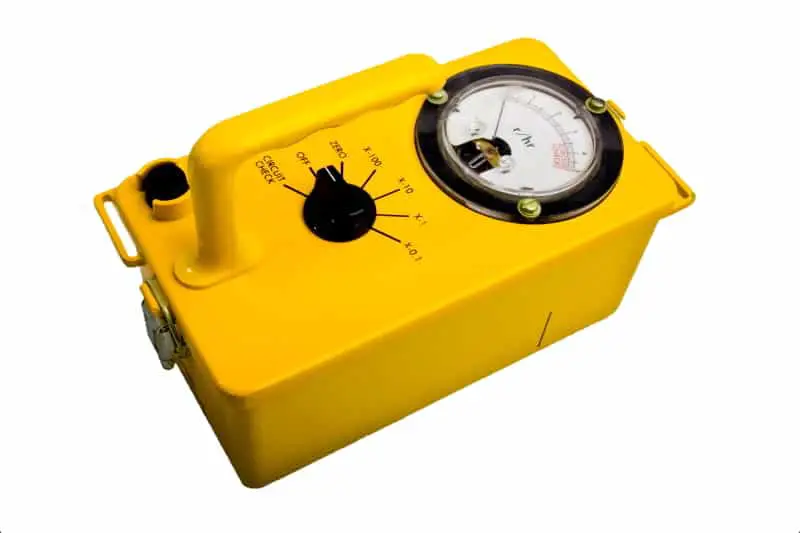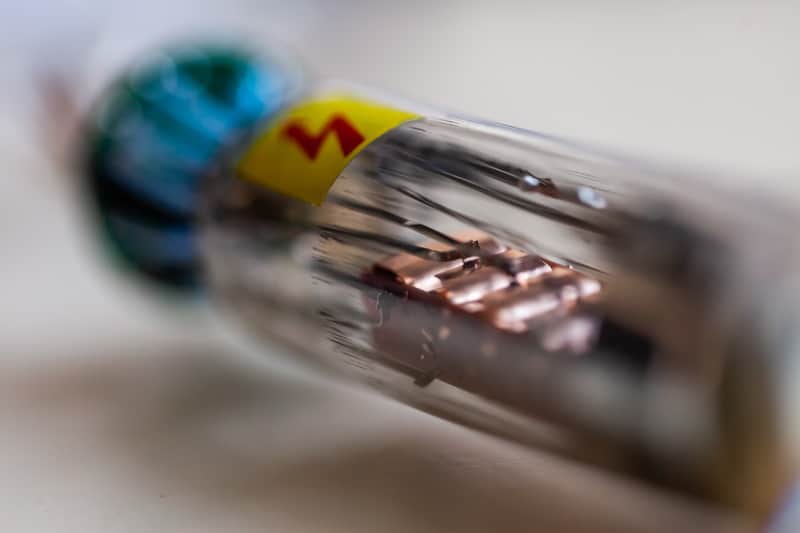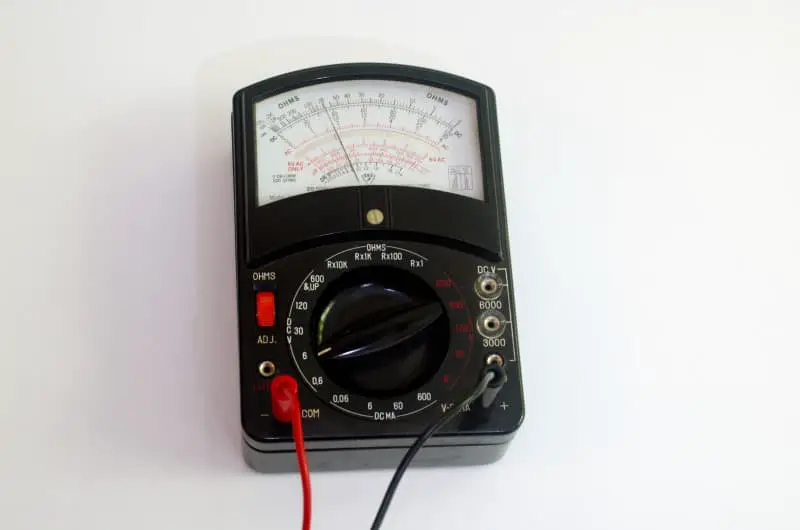The detection of radiation is an important aspect of protecting oneself from the dangerous effect of radiation. Read on to learn how you can detect radiations at home and in the workplace.
An EMF reader cannot detect radiation. Radiations can only be detected using a piece of special equipment. EMF readers can only detect and read electromagnetic fields produced by electrical gadgets and appliances. Ionizing radiations do not fall under the category of EMFs, so they require a different reader.
As protection from ionizing radiation is almost impossible without detection, radiation detecting devices must be known to aid protection and prevention from overexposure. You will learn a lot about radiation detection devices and why EMF readers cannot be used to measure radiations.
Can an EMF Reader Detect Radiation?
To adequately answer this question, you must understand the difference between the two types of radiations. These types of radiations are ionizing and non-ionizing radiations.
Ionizing radiations are radiations with enough energy to cause ionization. This type of radiation is dangerous and can cause huge damage to human health. Although in some controlled situations, they are used for beneficial purposes. Examples of ionizing radiation include gamma rays, X-rays, UV rays, and radiations from radioactive elements.
On the other hand, the non-ionizing radiations are those without enough energy in their spectrum to cause ionization. While some of these radiations are dangerous to human health, their effects are not as severe as ionizing radiation. Another name for non-ionizing radiations is Electromagnetic Fields (EMFs), and examples include radiations from electrical appliances, wireless gadgets, and the likes.
Understanding this difference helps establish the understanding that not all types of radiation can be detected by an EMF reader, also known as an EMF meter. Basically, only EMFs or non-ionizing radiation can be measured using an EMF meter. Ionizing radiations require a different type of detector.
What Can EMF Meters Detect?
An EMF meter is an instrument for measuring or detecting the electromagnetic field’s presence and intensity in a certain area. The device does this by either measuring the change in the electromagnetic field over time or measuring the density of the electromagnetic field radiation density.
There are two types of EMF meters, single axis and tri-axis. Single axis meters only measure one dimension of the electromagnetic field. As a result, it takes a long time to complete the survey and detection of the electromagnetic field, as it needs to be turned on all three axes to get a full survey.
This is not the case with the tri-axis meter. It is faster because it can measure the three axes at the same time. However, it is more expensive than the single-axis EMF meter. To read more about EMF meters and their actions, click here.
How to Detect Radiations
After establishing that special pieces of equipment are used to measure or detect ionizing radiation, we will discuss some of the important devices that can be used to detect radiation.
History of Radiation Detectors
From the days of discovering ionizing radiation, scientists have devised means of measuring and detecting the presence of ionizing radiation. The one attempt to measure radiation was through the use of the photographic plate, which is placed in the ionizing radiation path. After the radiation, the plate will be developed, and the spots from the ionizing effect of the radiation will be seen.
Another device used was the electroscope. This device used gold leaves to detect the presence of ionizing radiation. The radiation will ionize the gold leaves, leaving them charged. This causes the leaves to repel each other, thus signifying the presence of ionizing radiation.
Other devices developed in the past to measure ionizing radiation include Crooke’s Tube and Cloud Chambers. These devices provided the foundation for the understanding of ionizing radiation. Furthermore, they formed the basis of the development of new and modern radiation detecting devices.
Modern Radiation Detection Devices

The modern devices that are used to detect radiations are divided into three types. These categorizations are based on the operating principle of the detection devices. These include Gas-Filled, Scintillators, and Solid-State Detectors.
The gas-filled detectors are of several types and are used for different functions in different capacities. However, they have a unifying factor, which is their operating principle. These detectors use the ionizing effect of radiations on the gas in their chambers.
Examples include the Geiger counter, Ionization Chamber, and proportional Chamber.
1. Ionization chambers
This is one of the most popular gas-filled detectors ever used. It uses a gas-filled chamber to measure the ionizing radiations like X-rays, gamma rays, and beta rays. As the name implies, the device detects radiations through the radiating particles’ ionization effect on the gas inside the chambers.
The ionization chamber is a compartment that contains two electrodes known as cathode and anode. A voltage potential is used to create an electric field in the chamber with the filled gas. After the creation of this field, the incident radiation will cause some form of ionization in the gas between the electrodes.
When this ionization occurs, ion pairs will be produced, and under the influence of the electric field the positive ions and electrons will move to different sides of the electrodes. The movement of these ions along the electrode will cause an ionization current measured by the electrometer circuit.
The electrometer circuit is used due to its ability to measure minute changes in electric current. The ion pairs created cause a change in the electric current in an electrode. This change is proportional to the number of ion pairs generated, which is a measure of the amount of radiation that occurred.
This device is usually used in radiology, environmental monitoring, and the nuclear power industry.

2. Scintillators
This type of radiation detector uses the scintillation effect to measure the radiation. A scintillation effect is a process of giving off light when ionizing radiation passes through a material. Such materials are known as scintillating materials, and they are used in scintillators to measure and detect radiation.
The scintillator works in this manner. A photon of radiation is made incident on a scintillator material, and it gives off light flashes. A photomultiplier tube is added to the device, which converts the flashes of light into electric voltage and amplifies it so that it can be measured and interpreted.
The pulses of light that are converted to electric voltage are measured and recorded over some time to indicate the radiation’s strength. The photons of light are also interpreted to show the type of radiation.
Scintillators are highly sensitive and can be used to identify both the strength and sources of radiation. As a result, they are highly used in radiation security operations and nuclear energy stations.
3. Solid-state detectors
This class of radiation detectors is the last in the line of radiation detectors used in these modern times. These types of detectors use semiconductors to measure and detect ionizing radiation. Semiconductors are materials that offer some form of resistance to electric current. However, this resistance is not as much as that of an insulator. Hence, the name “semiconductors”.
This type of detector works like the ionization chamber. The difference is that instead of the gas that is used to fill the chamber, a semiconductor is used. Moreover, the voltage change that occurs in this type of detector is smaller than that of the ionization chamber.
The popular type of semiconductor used is silicon. In the semiconductor detection device, charge carriers are set free whenever ionizing radiation is made incident on the silicon semiconductor placed between the two electrodes. These charge carriers are divided into two, electrons and holes.
The electron and holes mimic the action of the ion pairs in the ionization chamber. The number of this pair determines the energy of the ionizing radiation. Under the electric field’s influence caused by the ionizing radiation, the electron and holes migrate to the electrodes causing a minute voltage change.
This voltage change is then measured and interpreted to give the state, type, and strength of the detected radiation.
Types of solid-state detectors
There are different types of solid-state detectors that have been developed in recent times. The major difference between these types of detectors is the semiconductor materials used to make them. The types of solid-state conductors include silicon detectors, diamond detectors, germanium detectors, and cadmium telluride detectors.
These types of solid-state detectors are used to perform different functions in different capacities, but they use the same underlying principle.
Conclusion
Detecting radiation is an important process in trying to protect oneself from the dangers of radiation. To successfully do this, one must have knowledge of the appropriate device for detecting and measuring the presence and intensity of radiation.
However, it is difficult to know the appropriate device to detect radiations without understanding that we have two types of radiations. These are ionizing and non-ionizing radiations. While X-rays and gamma rays are examples of ionizing radiation, EMFs fall under the category of non-ionizing radiation.
Thus, EMF readers cannot be used to detect ionizing radiation. Radiations can only be detected with the aid of devices like Geiger counter, ionization chambers, and the likes.


